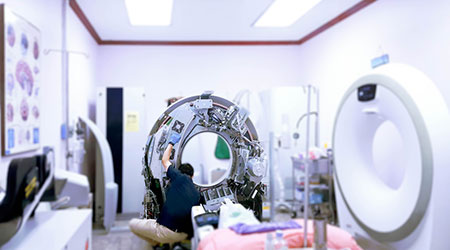Facility managers are under constant pressure to improve electrical system reliability, and the ever-changing nature of healthcare facilities these days presents a host of obstacles for managers and technicians trying to achieve this crucial goal.
One proven approach is to develop and execute a maintenance strategy, and the first step is to get management buy-in – literally. Top executives sometimes resist investing in electrical preventive maintenance because llas withike insurance, there is no direct payback. But the failure of electrical system components is much higher without proper maintenance.
Overall system reliability is only as good as its weakest link, and in some hospitals, one such link is receptacles. Ensuring reliable receptacles in the patient care environment is an important part of keeping patients, families and staff safe, according to Health Facilities Management.
To ensure proper operation of devices during emergency situations and to enhance electrical safety, managers should design a policy to promote a safe and healthy work environment for employees working with any electric appliances or equipment and to comply with Occupational Safety and Health Administration Standard 29 CFR 1910 Subpart S.
Many facility managers have standardized that all receptacles throughout health care inpatient, ambulatory and outpatient spaces are hospital grade-type for higher-quality outlets throughout these buildings – not only inpatient care areas – and to keep maintenance and testing simplified.
Click here to read the article.

 Healthcare Real Estate: Challenges and Industry Shifts for 2025
Healthcare Real Estate: Challenges and Industry Shifts for 2025 Geisinger to Build $32 Million Cancer Center in Pennsylvania
Geisinger to Build $32 Million Cancer Center in Pennsylvania Sunflower Medical Group Experiences Data Breach
Sunflower Medical Group Experiences Data Breach Strategies to Eradicate Biofilm Containing C. Auris
Strategies to Eradicate Biofilm Containing C. Auris Man Attacks Nurses, Police Officer at Jefferson Hospital
Man Attacks Nurses, Police Officer at Jefferson Hospital